JSX appears to have survived the lobbying onslaught against it by American Airlines, Southwest Airlines, and the Air Line Pilots Association. They tried to get the Biden administration to shut down JSX because (1) passengers like flying an all-business class product out of private terminals better, and (2) they aren’t subject to the occupational licensing rules designed to limit the number of pilots and drive up pilot wages.
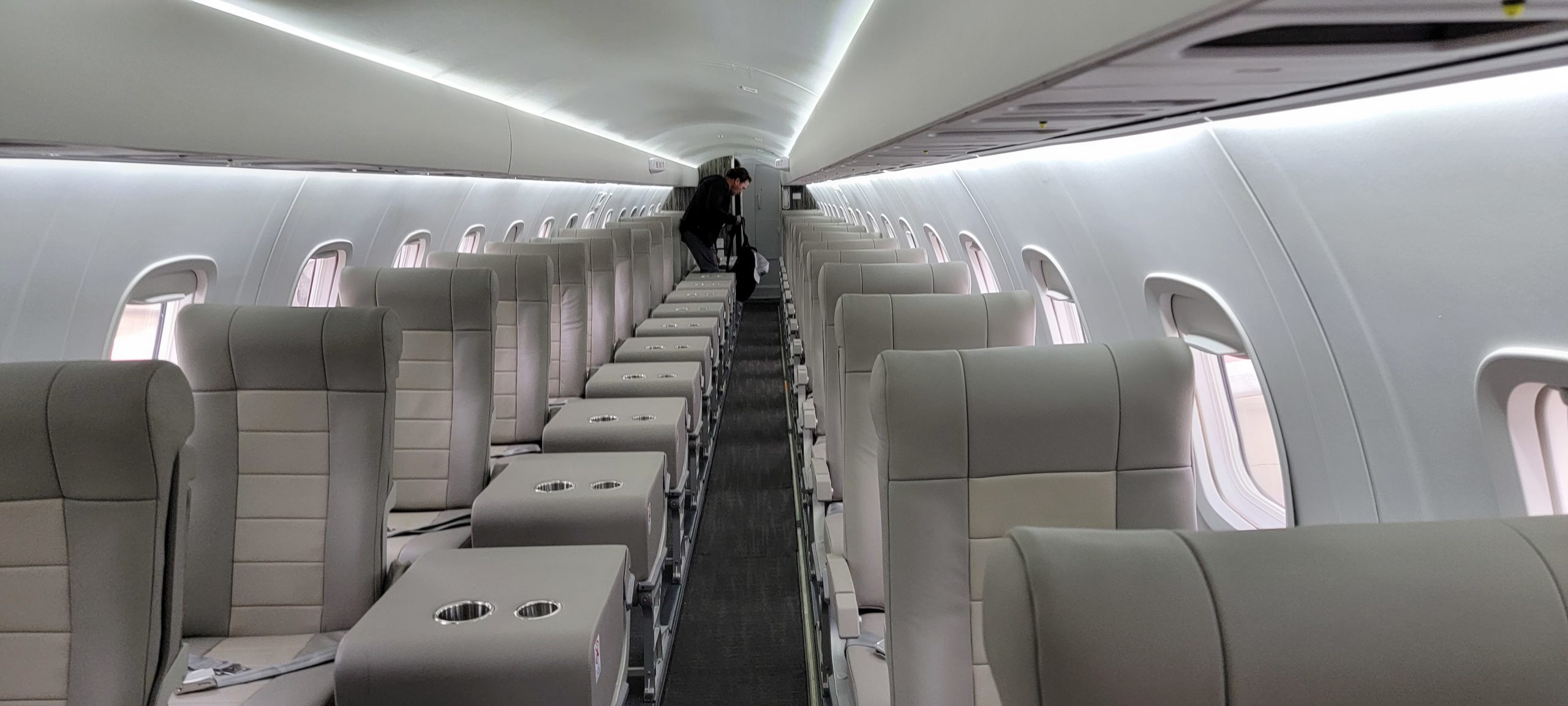
Now JSX appears to be back in growth mode.
- A year ago, the Biden administration FAA said they would regulate the JSX business model out of existence while being sensitive to the needs of small communities. They planned to release a rulemaking by the end of 2024 and didn’t. Some of that may have been the realization that one of their top priorities – electric-powered aircraft – required part 135 operators to become a reality
.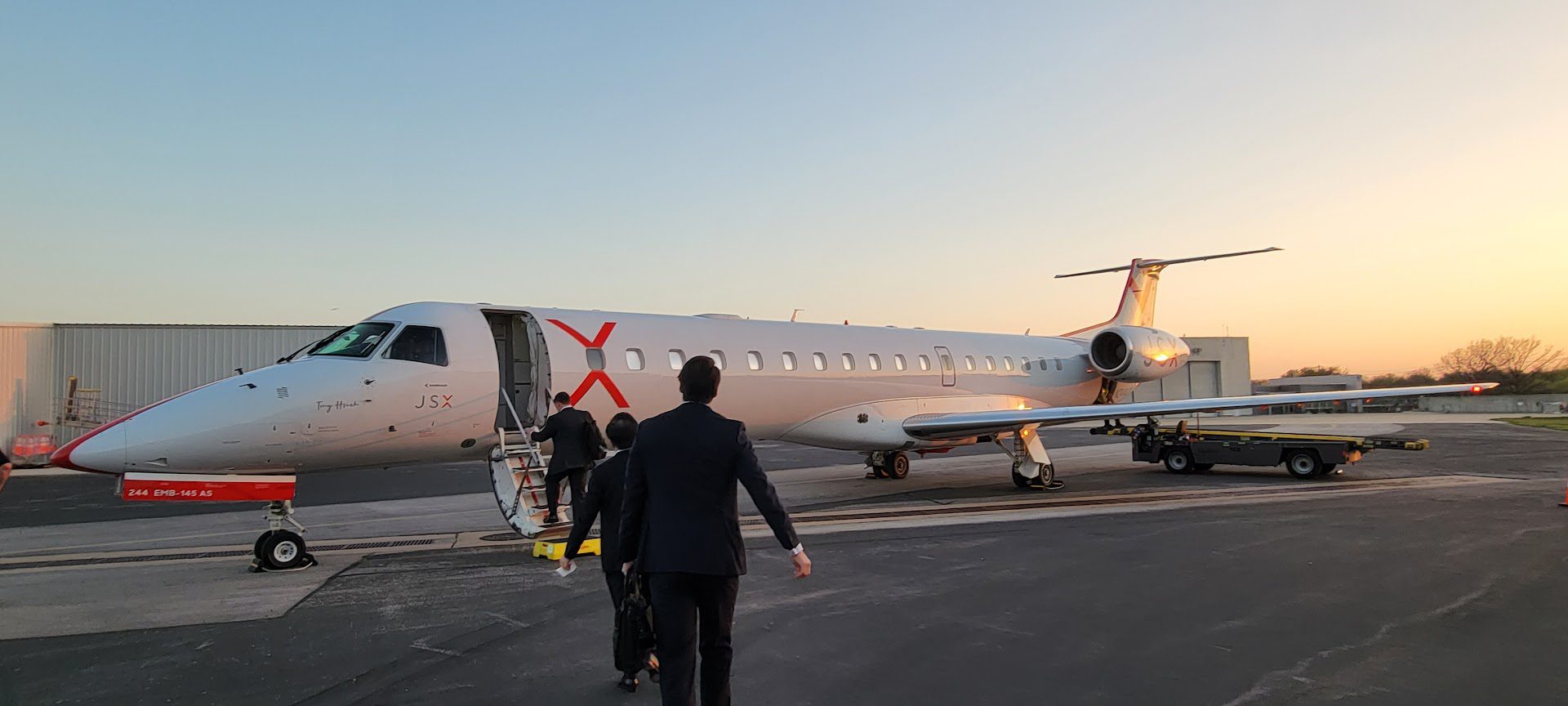
- The other front that the airlines waged war against JSX was at TSA (former American Airlines CEO Doug Parker says he buttonholed TSA Administrator Pekoske to push for this, roping in Southwest COO Andrew Watterson). Ultimately TSA will require JSX to enforce liquid rules and buy new scanners, which will require reconfiguring some private terminals, but won’t put them out of business as American and Southwest had hoped.
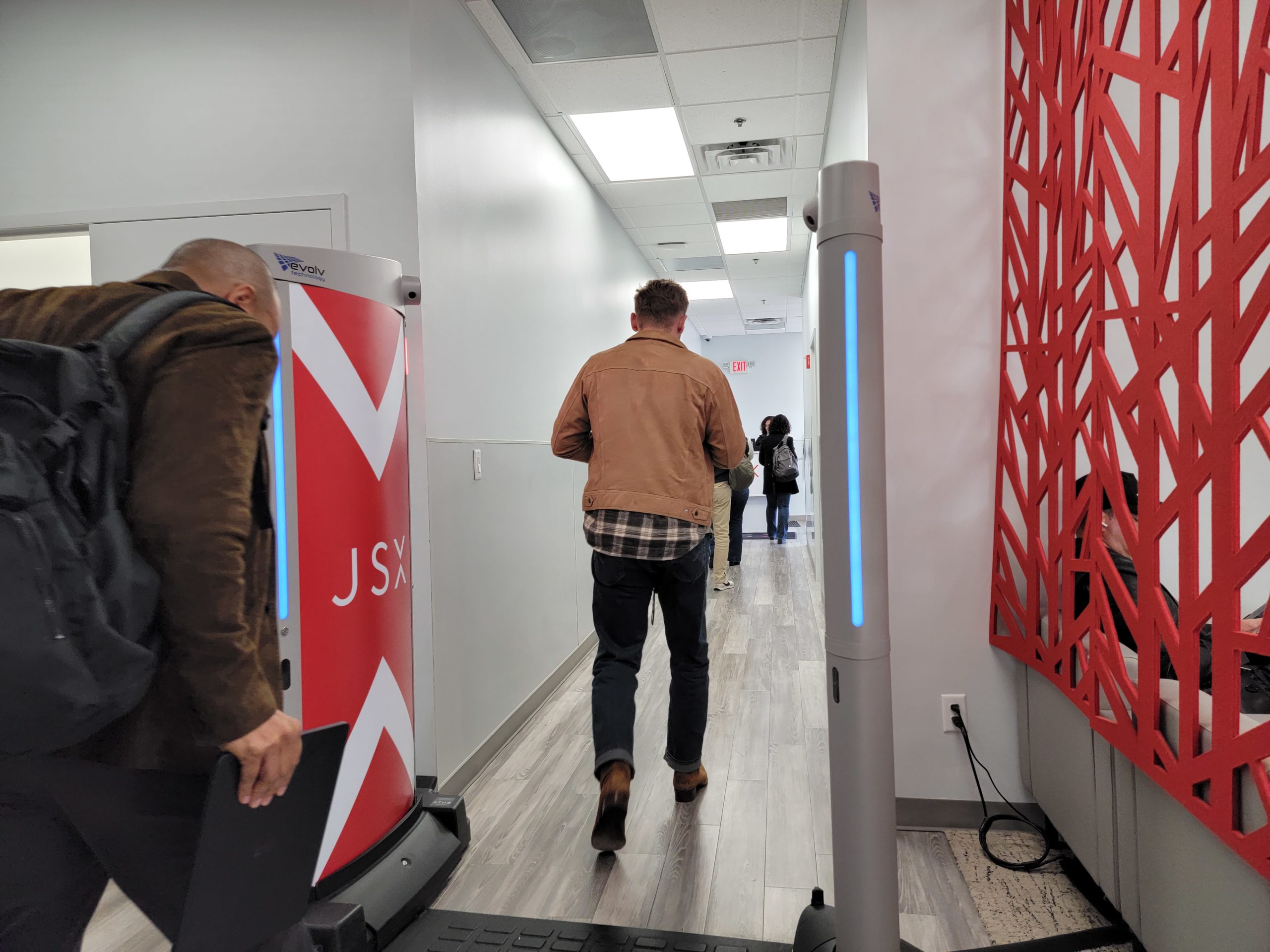
JSX currently operates Embraer 135 and 145 aircraft, with the 135s flying largely within California. They’re adding a third aircraft type to the fleet – bringing ATR 42-600 turboprops into the fleet “reaching more private terminals…and underserved airports across the United States.”
These planes will be configured with ATR’s HighLine interior with 30 seats and they’ll add StarLink internet (JSX was the launch customer for StarLink in commercial aircraft).
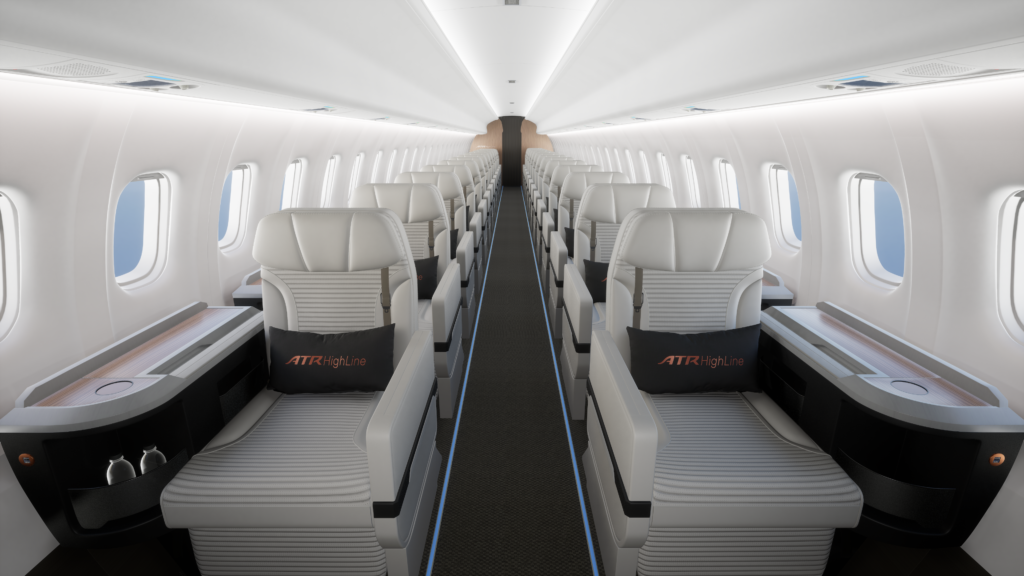
ATR HighLine Interior
As JSX CEO Alex Wilcox explains,
The ATR -600 series will bring over 1,000 new airports into reach for JSX, expanding access to reliable public charter flights across the great United States. Many of these airports were, until now, reserved only for those who had the means to fly private.
I am confident that our Customers will love the ATR product, not just for the variety of new routes it allows JSX to operate, but also for its quiet cabin and comfortable seating. When paired with our award-winning JSX hospitality, the addition of the ATR marks an innovative step forward in our company’s unyielding mission to increase the safety, speed, and convenience of air travel that moves our country forward.
JSX will initially lease just two of the planes, however they’ve also signed a letter of intent for 15 plus 10 options on either ATR 42-600s or ATR 72-600s. One Mile at a Time points out that we don’t know if these are new aircraft being purchased (he wonders if the initial ones are ex-Silver Airways planes) although I’d been under the impression that those were spoken for already.
I wonder how real that letter of intent is at this point. ATR wants to get into the U.S. market with these planes, and into the charter market here, and may be heavily incentivized to offer strong terms. However since we’re hearing about a letter of intent rather than firm order I have to discount certainty beyond the leased planes they plan to bring into service within the next six months.
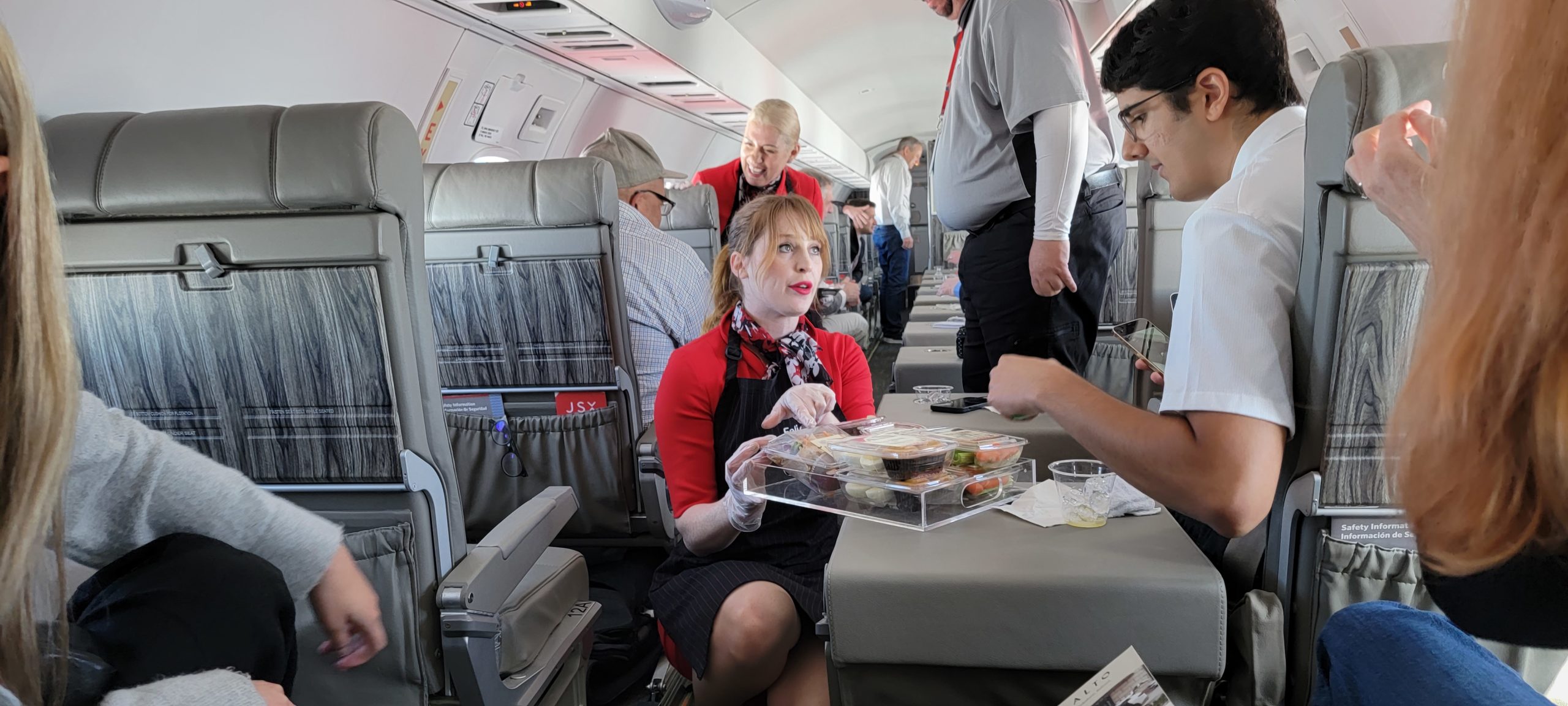
After all, they’ve announced orders for a href=”https://viewfromthewing.com/from-private-terminals-to-electric-wings-jsx-announces-order-for-up-to-332-evtol-aircraft/” target=_blank>several electric planes that aren’t yet certified for operation, including from one manufacturer who’s no longer in business. And while they would certainly open up markets that cannot be served by Embraer 135/145 planes, and would have appealed to the Biden administration, ATRs open up new markets too.

Credit: Aura Aero
Perhaps this replaces the electric aircraft future at JSX, perhaps this is a hedge in case those planes don’t have a future, or maybe it will be something else. Surely there’s still growth opportunities that JSX has yet to exploit under their current model and with planes they haven’t yet brought into service – more flights in the Northeast for instance.
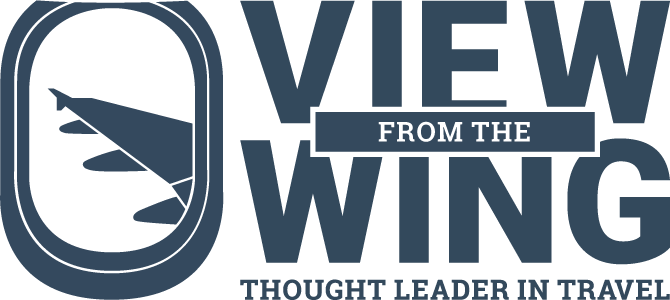

“Luxury Turboprops” is a contradiction in terms.
“Luxury Turboprop” os not a contradiction if you lived in a non flyover state. Napa might only be 20 miles from me but I’d rather fly there than try to drive there … same with getting to Montauk.
If you think luxury is about the plane itself and not how it is configured and fitted out you may not know much about how luxury is defined by most passengers. JSX is about as close as one can get to private without flying private.
Great!
Hopefully “bloggers” and “thought leaders” will take those instead of complaining about every little thing about traveling on a major carrier.
Gary, you make more than those pilots. What is your problem? Airfare has never been cheaper. Insane that your ending sentence in your opening paragraph is about pilot wages. I truly think you have a personal vendetta against them.
I wonder how much $TRU MP coin donations this costed!
And since you can run a full scheduled airline skirting airline passenger security rules and screening by calling it a charter or whatever, I suggest all salaried Americans to start calling their salaries tips and avoid paying income tax. Just pay (a bit less) directly to the king for protect. After all, in a lawless state it’s your right not to follow laws.
I’m loving the variety of sassy responses above. Slay queens!
Love ya, Gary. And you know I enjoy your website and articles.
But this is above average clickbait.
JSX has an LOI for “up to 25 ATRs” . A LETTER OF INTENT….
Headline: AA and WN are screwed. JSX may fly to up to 1,000 airports.
hurting AA and WN in cities such as … Walla Walla, Presque Isle, Page, NM, nonstops between Billings and “Bert Mooney” or Elko and SLC or Bar harbor and Bedford, MA.
The headline is a tad over the top given what JSX plans to do in case you haven’t seen the route map
I’m sure connecting SHD and JYO or Silver City and ABQ somehow matters to AA and WN, but this is not really a big deal and really only pushes the narrative that JSX hasn’t been able to compete against AA and Wn since most of their ATR route map is avoiding the majors altogether or actual EAS markets that JSX would have to win first.
.
Even on the routes that AA does fly like CLL-Dallas or Yuma-Phoenix, those are all feed markets.
And all this on a Letter of Intent…
@MaxPower — So true. Gary should’ve gone with: “Move over Qsuite, this ‘premium’ airline just got a propeller plane!” Or, he could’ve gone with something more bombastic, like, onomatopoeia of the siren “wee woo wee woo… all hands on deck… JSX is ‘on fire’ with these new ATRs!” Hawt. If there wasn’t ‘hype’ it’d just be Simple Flying.
I hate having alternatives. I want to wad myself up and be stuffed into a legacy carrier
“It’s over, @Johnny, it’s over!”
@1990 — on the behalf of @Johnny, “Nothing is over!”
JSX from BUR to LAS was so much better than Spirit or Southwest at the same cost. It wasn’t 100% (a long wait to deplane, really rough areas around the terminals) but it was so much better than the big guys.
Instead of trying to kill it, a larger airline should have bought the naming rights.
(Perhaps American Airlines Prestige by JSX, Southwest Charter by JSX, Delta Two by JSX, etc.), codeshared the tickets (JetBlue might have but as crazy inflated prices) and just gotten themselves more shelf space.on the.plane ticket aisle.
@L737 — “You just don’t turn it off!”
A couple of interesting things:
United has invested in JSX.
SkyWest has well over 50 CRJ’s flying for UA that are quickly aging out.
The ATR is the only plane in production configurable for 50 seats that UA could bring into its United Express fleet.
There aren’t enough CR7’s in the world to be reconfigured into CR550’s to take up the slack of the CRJ’s
The ATR is slow, noisy and vibrating and not a luxury experience by any means.
It is also expensive per seat to operate, although that’s not so much of an issue with the price-insensitve market it goes for.
Maybe they’ve looked at the future and counted the number of CRJ and EMB-135/145’s in the world and decided they can not plan for a long and healthy future with what’s out there and that ATR’s will allow them to eventually control the Essential Air Service and other targeted markets as The Big 3’s partners move exclusively to 76 seaters.
@Goforride — Interesting hypothesis. You know who’s about to have a bunch of ATRs available, Silver, since those guys are probably not surviving bankruptcy. Then again, this post was rumoring about new aircraft, not necessarily acquiring pre-existing ones. Also, ATR is a French company, so yet another ‘win’ for the EU (as opposed to US, Canadian, or Brazilian manufacturers). Ok, fine, Bombardier is now owned by Mitsubishi, so Japanese? Ugh, yes, and China was trying with Comac, but let’s get real, ain’t nobody in ‘the West’ buying their stuff. And, yikes, run away from whatever Su/flop Russia makes these days.
I want to comment on the ATR 72. A couple of years ago I flew my first and only ATR 72 experience, I believe a 600 with the Air Lingus regional carrier, EDI – DUB. I thought it was surprisingly quiet, and I was right on the wing. I’ll take that over the last row of an ERJ as far as noise. So to suggest that you could not create a luxury experience in an ATR is silly IMO. Out of LA, this has Palm Springs Express written all over it.
@Steve — Sure beats taking a boat between those islands. Often the ATR is found in a lot of ‘developing’ countries (third world, s-hole, etc., whatever your preference in terms). Have taken it in a lot of places with short or unpaved runways, too. It’s odd to see it at major airports, though.
I take issue with the characterization of the JSX Embraer seats as being “luxurious” when they have less pitch than any legacy domestic F product and roughly the same seat width as economy. While JSX is convenient, I am very surprised that they didn’t spend more on retrofitting those jets with seats that are significantly more comfortable and a bit more spacious.
I see Gary hasn’t given up on his blatant, outright lie that he pushes from time to time about JSX. The FAA and other airlines are NOT trying to force JSX or of existence, but rather force them to operate under the same rules that everyone else has to operate under. Seeing as how they are competing for the same customers and many of the same city pairs.
The fact is, JSX is a scheduled airline PRETENDING to be a charter outfit, so the can operate under much more lax safety rules. They have two subordinate companies, one of which operates under Part 135 as a charter outfit, but then their other company “buys” all the charters, and then resells the seats as a scheduled airline. This way, they get to compete with other airlines without having to follow the same rules. They blatantly exploit a loophole.
Part 135 has much less stringent safety rules, maintenance requirements, pilot medical and training requirements, security requirements, etc., than does Part 121, which scheduled airlines are SUPPOSED to operate under. This is how JSX can undercut other airlines, and why the FAA and other airlines want to close that loophole. For fair competition.
You won’t hear any of this from Gary — he appears to be married to this lie. Just listen to the over- the-top rhetoric in this article alone.
@Sean Murphy – no one is ‘pretending’ to be anything they aren’t. JSX complies with all FAA regulations. And the FAA was completely fine with it until ALPA, American and Southwest started lobbying efforts. In fact, the Airline Deregulation Act forbids the FAA from imposing more onerous rules on part 135 operators than were in place at that time.
There is no credible argument over JSX’s safety. They absolutely exceed all part 135 standards, and all applicable FAA rules. Slandering them is bullshit.
And JSX generally doesn’t ‘undercut’ other carriers, they charge a premium. Customers prefer them because they offer a faster, simpler more hassle-free experience. And by the way American Airlines and Southwest will both sell similar charter experiences. Southwest, for its part, touts on its website that it only exists today because of how it was able to exploit a loophole in 1971 to avoid federal regulation entirely!
Complete BS, Gary. I never said they didn’t meet Part 135 safety standards; I pointed out that Part 135 standards are MUCH less stringent than Part 121. And most importantly, they’re *cheaper*. That’s why JSX exploits this loophole, and that’s why they can sell their product at the prices they do. Less safety equipment, less maintenance, less training, fewer employees. Then they fly what is equivalent to Part 121 scheduled service without the Part 121 safety rules. Why do you keep neglecting to point that out?
Either you know absolutely nothing about airlines, the FAA or FARs, or you’re the biggest red herring peddler in the internet. Yes, other airlines, including Southwest and American, sell charters for extra revenue, when the plane aren’t otherwise engaged. Unlike your claim, the “charter experience” is *nothing* like JSX. A charter is an irregular flight, not scheduled, and means the entire plane load, not a seat or two. They generally go to sports teams, colleges or military. Does that sound like JSX? Nope — JSX sells every chartered plane flight every day to ITSELF, and then their alter-ego re-sells the seats as a scheduled airline. A scheduled airline without having to spend the money to follow scheduled airline rules.
You pretending and insisting that this is the same thing is the most laughable thing I’ve read on the internet in years!
@Sean Murphy – you implied that JSX was less safe and there is absolutely no indication of this.
Further, JSX absolutely exceeds part 135 requirements. They aren’t following part 135 minimums for costs. Part 135 allows them to operate out of private terminals with 30 or fewer passengers, and deliver a better customer experience.
Part 135 pilot requirements are absolutely appropriate for their operation – they hire a bunch of recently-retired American and Southwest senior captains, who fly 1-2 hour flights and 90% of which overnight at base. So they sleep in their own beds in Dallas. Far less fatigue than, say, a 62-year old captain flying to Europe or Asia.
And they can hire sub-1,500 hour co-pilots, which is great. The 1,500 hour rule is terrible for safety, pilots going to part 121 carriers develop terrible habits in their quest for hours with repeated touch and go clear air flying that doesn’t resemble the conditions of commercial air travel in any way – which is why those carriers need to train the bad habits out of them. Sub-1,500 hour pilots operate within U.S. airspace every day at Lufthansa and other foreign carriers. You can qualify for minimum hours in a hot air balloon. The balloon can be tethered. This was just a requirement meant to make becoming a pilot more costly and time-consuming – ALPA lobbied for it to limit the number of pilots and artificially drive up wages. It’s not a safety rule.
JSX exceeds TSA twelve five standard security program requirements, and FAA part 135 rules, and both agencies were perfectly happy with their operations until ALPA, American and Southwest started lobbying against them. But that lobbying failed to kill them. Southwest and American don’t like the competion, especially based in Dallas, and ALPA doesn’t like the precedent that circumvents their hard-fought moats that throttle the pilot pipeline. A pilot can get paid working for JSX, learn from senior captains, and have great experience instead of having to work as an instructor doing repetitive work with less experienced students until they’ve racked up the hours.
For passengers they offer a better ground experience (show up 20 minutes prior to flight and get on, not having to traverse a mega-terminal) and a better inflight experience (business class seats, few fees, and employees who like their jobs).
We need more of that, not less.
@Gary Leff — Beautiful explanation. Wild that ballooning is a possible loophole for hours (even tethered!)
Gary, please stop arguing against what you want me to have said, instead of what i actually said. I never said nor implied that JSX was less safe. NEVER. Not once. So stop pretending that I did. I simply said that for JSX, by flying scheduled airline flights under Part 135 instead of under Part 121, they have to follow much less stringent safety rules. And THAT is an undeniable fact. I’m sure they meet Part 135 regulations, but JSX most certainly do NOT satisfy the more stringent Part 121 rules that scheduled airlines are *supposed* to follow. Get it now? And JSX saves millions of dollars per year by NOT having to follow the more stringent Part 121 rules. Also an undeniable fact.
And, for you to pretend that saving money is NOT the reason JSX does this is just plain embarrassing. You actually claimed that’s it’s only so they “can use private terminals.” Uh, newsflash Gary, Part 121 carriers can use private terminals as well; so much for THAT argument.
You can also stop saying that AA, SW, and the FAA are “trying to kill them.” Their argument is not to destroy JSX, but rather to make them follow the same rules as everyone they’re competing against. Don’t you think that’s only fair?
@Sean Murphy – if you’re not arguing that JSX is less safe (you were certainly implying it…) then your whole position is silly.
The entire point is to ensure safe and efficient air travel. JSX is part of that. FAA and TSA were comfortable with them before ALPA, Southwest and American lobbying started. And TSA was ultimately fine with them, too! FAA said a year ago they were going to undertake a rulemaking on an expedited basis, but it doesn’t look like that’s the case any longer.
I would also, from a DOT filing:
“JSX uses state-of-the-art safety technologies and programs
that exceed the FAA’s requirements for Part 135 operators. JSX has a Safety Management
System (SMS) program, an Aviation Safety Action Program (ASAP) and Flight Operational
Quality Assurance (FOQA) program – none of which are mandated under Part 135.
JSX’s flight training requirements for pilots exceed FAA requirements for Part 135
operators, and every JSX flight is operated by two type-rated pilots trained in the same Level D
simulators and using the same training methodology as Part 121 airlines. It also maintains a
Flight Safety Review Board, a Training Review Board, and a Hiring Review Board, all comprised
of senior management officials. And, although not required by Part 135, JSX conducts initial
operating experience (IOE) training with company instructors, for all pilots (both captains and
first officers), involving a minimum of 25 hours, as well as Line Oriented Flight Training (LOFT)
on a recurrent basis using real-life scenarios and events based on information obtained through
JSX’s safety programs, including those identified above.”
As a result of JSX’s codeshare with JetBlue, JSX must accept mirrored OpSpec (A030/A031) covering training, maintenance, dispatch, MEL, weight and balance, etc. Even though JSX flies Part 135, these paragraphs pull it up to part 121 equivalent standards on the audited items. And because of the JetBlue codeshare the tarmac delay rule & BTS Form 244 apply as well as DOT disability regs, refund, customer service, and ACAA hotline requirements.
JSX is 100% compliant with regulations, their business is fully legal and delivers value to customers. If you’re NOT arguing that there’s a safety concern, then there’s no public policy justification to act against them.
By all means, Gary, say it again: “JSX meets or exceeds all Part135 requirements!” Maybe the 10th time is the charm. Nobody is saying any different, so you can stop repeating yourself whenever you want. Why don’t you address MY arguments, instead of simply repeating the same, non-apropos line about Part 135? Debate THESE facts:
1. JSX operations are conducted under less stringent safety regulations than other scheduled airlines (135 v 121). Whether they exceed SOME parts of Part 135, or meet SOME Part 121 requirements is immaterial.
2. JSX saves millions per year by NOT having to follow Part 121 regulations. Doing it this way is *considerably* cheaper for them.
3. JSX operates as a scheduled airline, advertising and selling tickets to anyone on a preset, daily flight schedule, even though they hold themselves out to be a Part 135 Charter Operator, which is described by the FAA as “On-Demand” service.
4. They accomplish this by “selling” charters to *itself* every day, and then reselling individual seats in a scheduled manner. This was NOT the intention of the differentiation of Parts 121 and 135. Those parts were designed for different types of commercial flying.
Please tell us Gary, are ANY of my numbered bullets wrong? Is anything I wrote not true? Debate THAT, instead of repeating something nobody actually said.
And lest you still pretend that they don’t do it for the money savings, than why do it at all? After all, Part 121 carriers can do literally *everything* JSX does; why doesn’t JSX fly under 121 so people stop “attacking” them? What else would be the point?
You insist that AA, SW and others are trying to “destroy” JSX, when all they want is for JSX to follow the same 121 Rules that they have to, when they compete head-to-head. And, as you say, if switching to 121 rules DOES “destroy” JSX, then you’ve made my money argument for me.
Gary—don’t you think that JSX selling charters to itself through two subsidiaries shows SOME degree of duplicity? This “subsidiary shuffle” is NOT made readily visible to passengers. Everything is done with the intention of giving every appearance of it being what those passengers are used to—a scheduled, ticketed Part 121 flight. Why? JSX does not meet ALL 121 standards and is playing something of a shell game to not make that visible to consumers.
I’m a former Aviation Safety editor and private pilot. I know the difference between Parts 121 and 135. The vast majority of people do not. IMHO, the definition of “charter flight” should be changed to specify that it is a flight contracted for by an individual or entity unrelated in any way to the aircraft operator. I believe that would align correctly with the FAA’s intent in creating the Part 135 category.
Maybe there’s even a place for some intermediate option that is along the lines of what JSX offers. What I don’t think there should be room for is duplicity that takes advantage of people’s lack of knowledge about the arcane world of FAA regs.
One other point. If you think that TSA isn’t a core safety function, why don’t you advocate for its total elimination? If you agree that it IS a core safety function, then how can its absence not make JSX flights to some degree less safe? Is there some magic that will make only “good,” mentally stable people buy JSX tickets?
@Brian Weiss – “One other point. If you think that TSA isn’t a core safety function, why don’t you advocate for its total elimination? If you agree that it IS a core safety function, then how can its absence not make JSX flights to some degree less safe?”
I advocate for TSA to be improved, largely by separating out regulation of security from performing the function. I believe it’s dangerous that TSA lacks accountability by regulating itself. Many of its practices do not enhance safety, and can compromise safety (focusing on non-existent threats distracts from catching potential real ones). This has meant mostly wasting time and money, rather than greater damage, because there haven’t been active plots against U.S. aviation as TSA itself has admitted. See, for instance, https://viewfromthewing.com/tsa-regulates-itself-fails-repeatedly-still-gets-funded-time-to-shut-it-down/
JSX checks passenger lists against government targeting databases, swabs carry-ons, passengers go through weapons detectors (Evolv scanners) which probably perform at least as well if not better than TSA screening. TSA regulates security at JSX, it doesn’t perform the function itself. That’s better!
Plus the missions are different, 30-seat regional jets aren’t the same value targets that large jets from more recognizable airline brands would be and an attack on one isn’t going to have the same scale as a widebody.
In any case, to your claim it is somehow ‘duplicitous’ to find a way within the law to offer a better product for customers then you’re thinking about this in a completely wrong way. They are both 100% legal and every indication is they’re also completely safe.
Of course it’s duplicitous, Gary; even if you won’t admit it in your column, you know it in your head.
JSX exploits a loophole to operate a scheduled airline under rules never intended for scheduled airlines. They save millions doing this, and it gives them a competitive advantage over other airlines who follow the correct rules.
If it *wasn’t* a duplicitous exploitation of a loophole, then they’re would be no need for a Part 121, would there? You said we “need more” airlines like this, so perhaps you should lobby Congress to eliminate Part 121 altogether. Then everyone could operate under the more relaxed safety rules.
@Sean Murphy – I don’t need to lobby Congress to eliminate part 121.
1/ what JSX is doing is legal
2/ Congress has already banned more onerous regulation of part 135 at 49 U.S.C. § 1371 et seq
3/ DOT and TSA were not ‘duped’ they were fully briefed and signed off on the model
This is safe and beneficial to consumers. The only ones ‘harmed’ are entrenched interests which are massively subsidized (part 121 carriers). Quit carrying water for them.
Once again, you addressed nothing I actually said.
1/ Never said it wasn’t legal. It’s “legal,” because it’s a clever manipulation of a loophole that allowed scheduled airline operations that was *never intended* to occur that way. You know that as well as I do, but can’t bring yourself to admit it. And you keep changing the subject to avoid that inconvenient fact.
2/ I couldn’t find anything in 49 USC 1371 concerning what you said. Regardless, Congress can change any part of the US Code whenever they want. They do it all the time.
And because it’s “legal” under the letter-of-the-law loophole, FAA and TSA were *required* to approve it. It’s not like they said “Wow, this is a great idea,” or anything, like you imply.
BTW, exactly who and how is “massively subsidizing” the Part 121 carriers as you claim? Kinda curious about that.
Well thank god for “loopholes”. There should be more of them.